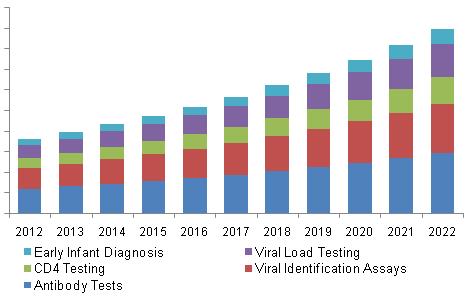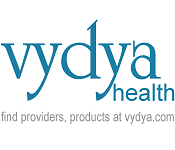Conference Series is beaming to invite all the experts in the field of
Infectious Diseases, Immunology, Virology, for the forthcoming event
“9th Global Experts Conference on HIV AIDS, STDs and Co-Infections(HIV AIDS Conference 2019)” which is going to be held on
November 06-07, 2019 at
Yokohama, Japan.
This Conference focus on
HIV Science features the latest
HIV science, including basic, clinical and prevention research. It brings together top basic, translational, and clinical researchers from around the world to share the latest studies, important developments, and best research methods in the ongoing battle against
HIV AIDS and related infectious diseases. As
HIV AIDS is an alarming concern throughout the world,
HIV AIDS Conference 2019 will mainly focus on issues like primary HIV Infection, Transmission and eradication issues apart from this HIV Co-infection,
HIV Current pharmaceutical design would cover the experimental drugs developed.
HIV AIDS Conference 2019, lays perfect platform for physicians, nurses/nurse-practitioners, pharmacists, psychologists, behavioral researchers, Health care professionals, social scientists, epidemiologists, social workers, AIDS service organization (ASO) staff, students, Academicians and professionals working in the field of
HIV medicine.
Heads, Directors, Group Leaders, Professors, Lecturers, Research Associates, Scientists, Investigators, Fellows.
-
Physicians in the field of Vaccine and research
-
Vaccine &Immunology Associations and Societies
-
Training Institutes
-
Physicians and nurses with a special emphasis on infectious diseases
-
Public health professionals
-
Community health educators
-
Members of academia
-
Health professionals
-
Nurse Practitioners
-
Pharmacists
-
Social Workers
-
Academia
-
Students
-
Researchers
-
HIV AIDS associations and societies
-
Vaccines & Immunization, Scientists
HIV AIDS Conference Highlights:
-
HIV AIDS
-
HIV AIDS Signs and Symptoms:
-
HIV and Cancer: Risks, Types, and Treatment
-
HIV/Viral Hepatitis
-
HIV Drug Discovery and Research
-
HIV and AIDS Nursing Care Management
-
HIV Diagnosis
-
AIDS Stigma and Discrimination
-
Preventing Mother-to-Child Transmission of HIV
-
Sexually transmitted diseases (STDs)
-
Infectious Diseases Prevention, Control and Cure
-
Viral Infectious Diseases
-
Vaccine Development for STDS
-
Public Awareness on STDS
-
Pediatric HIV Treatment Initiative
HIV stands for human immunodeficiency virus, which causes HIV infection. HIV attacks and destroys the CD4 cells of the immune system (CD4 is a glycoprotein found on the surface of immune cells such as T helper cells, monocytes, dendritic cells, and macrophages). In the initial stage of infection, a person may not notice any symptoms or experience a brief period of influenza-like illness. As the infection progresses, it interferes more with the immune system, makes it harder and harder for the body to fight off infections and some other diseases. Opportunistic infections or cancers take advantage of a very weak immune system and signal that the person has AIDS. The loss of CD4 cells makes it difficult for the body to fight infections and certain cancers. HIV can gradually destroy the immune system and advance to
AIDS if it is not treated with drugs.
The symptoms of HIV vary, depending on the individual and the stage of the disease is Early stage, Clinical latency stage and AIDS. The first signs of Hiv generally appear within 2-4 weeks after HIV infection. Primary infection (Acute HIV) develop a flu-like illness within a month or two after the virus enters the body. signs and symptoms are Fever, Headache, Muscle aches and joint pain, Rash, Sore throat and painful mouth sores, Swollen lymph glands, mainly on the neck. Clinical latent infection (Chronic HIV) During this stage, HIV is still active but reproduces at very low levels. People with chronic HIV infection may not have any HIV-related symptoms or only mild ones. In some individuals, persistent swelling of lymph nodes occurs during this stage. This stage lasts around 10 years. When AIDS occurs, your immune system will be severely damaged. You'll be more likely to develop opportunistic infections. soaking night sweats, Recurring fever, Chronic diarrhoea, Weight loss, Persistent white spots / unusual lesions on the tongue or in mouth, Persistent, Skin rashes, unexplained fatigue or bumps.
HIV infected People have an extensively higher risk of some types of cancer compared with uninfected people. some of these cancers can develop and grow more quickly because of a weakened immune system. People with HIV infection or AIDS are more likely to have certain other risk factors for cancer, such as being smokers, heavy alcohol use, needle sharing. certain types of cancer are more common in people with HIV than in people without it, these types of cancers known as “AIDS-defining cancers”. These cancers include Kaposi sarcoma, Non-Hodgkin lymphoma, cervical cancer, Anal cancer, Oral and oropharyngeal cancer, Lung cancer. Standard treatments for cancer include. chemotherapy, radiation, immunotherapy, targeted therapy, surgery.
Human Immunodeficiency Virus (HIV) and Hepatitis B virus (HBV) are bloodborne viruses transmitted primarily through sexual contact and injection drug use. Because of these same modes of transmission, people at risk for HIV infection are also at risk for HBV infection. HIV infected people are disproportionately affected by viral hepatitis, and those who are coinfected are at increased risk for serious, life-threatening complications. Viral hepatitis infection is often serious in people living with HIV and may lead to liver damage more rapidly, persons at risk for HIV be tested for HBV and HCV infection and vaccinated against hepatitis B and hepatitis C.
The most advanced HIV treatments seek to inhibit the virus’ ability to replicate its RNA and produce more copies of itself. HIV protease (an enzyme that cleaves and processes viral precursor proteins letting virion maturation). Treatment regimens containing combinations of reverse transcriptase and protease inhibitors, very often known as Highly Active Antiretroviral Therapy (HAART), it revolutionized the treatment of people with HIV by markedly reducing viral load and decreasing the incidence of AIDS-associated opportunistic infections. Many patients receiving HAART nevertheless experience metabolic abnormalities and drug toxicities, have difficulty adhering to the complex drug regimens and grow strains of HIV resistant to therapy.
People with human immunodeficiency virus/acquired immunodeficiency syndrome (HIV/AIDS) and chronic depression constitute a growing population of individuals in need of quality nursing care management. Nursing Care of Patients with HIV/AIDS facilities ranging from the primary-level health centre to the tertiary-level hospital who work in a variety of roles to provide care to those with HIV. Nurses provide life-saving and life-enriching care for patients with HIV. Inpatient persons with HIV require intensive nursing care. HIV disease may cause psychosocial transition (person's experience, view changes on the world), a stress-inducing experience, a developmental experience, and an existential crisis. Nurses with resource-limited areas with evidence-based knowledge they can deliver safe and effective care to the patients.
Several types of tests check your blood or body fluids to see if you're infected. These tests look for antibodies to the virus that the body creates to fight the virus. HIV is most commonly diagnosed by testing your blood or saliva for antibodies to the virus. Unfortunately, it takes time for your body to develop these antibodies —usually up to 12 weeks. If your sexual history and current signs and symptoms suggest that you have an STI, laboratory tests can identify the cause and detect coinfections you might have contracted. Blood tests can confirm the diagnosis of HIV or later stages of syphilis. Some STIs can be confirmed with a urine sample. If you have active genital sores, testing fluid and samples from the sores may be done to diagnose the type of infection.
HIV-related stigma and discrimination refer to prejudice, negative attitudes and abuse directed at people living with HIV and AIDS. Stigma and discrimination also make people vulnerable to HIV. Those most at risk to HIV continue to face stigma and discrimination based on their actual or perceived health status, race, socioeconomic status, age, sex, sexual orientation or gender identity or other grounds. HIV/AIDS discrimination exists around the world, including ostracism, rejection, discrimination, and avoidance. Consequences of stigma and discrimination may result in low turn-out for HIV counselling and testing, identity crises, isolation, loneliness, low self-esteem and lack of interest in containing the disease
Mother-to-child transmission of HIV is the spread of HIV from a woman with HIV to her child during pregnancy, childbirth (also called labour and delivery), or breastfeeding (through breast milk). Mother-to-child transmission of HIV is also called perinatal transmission of HIV. prevention mother to child transmission of HIV (PMTCT), provide a range of services to women and infants. These include preventing HIV infections among women of reproductive age preventing unwanted pregnancies among women living with HIV and providing women living with HIV with lifelong ART to maintain their health and prevent transmission during pregnancy, labour and breastfeeding. PMTCT programmes also support safe childbirth practices and appropriate infant feeding, as well as providing infants exposed to HIV with virological testing after birth and during the breastfeeding period, ART for prevention and effective treatment.
Sexually transmitted diseases (STDs), or sexually transmitted infections (STIs), are generally acquired by sexual contact. Some STDs can spread through the use of unsterilized drug needles, from mother to infant during childbirth or breastfeeding, and blood transfusions. STDs are common and it is possible to be infected without being aware because many STDs do not display obvious signs or symptoms. STD testing once or twice every year is recommended.
Infection Prevention and Control are helpful to prevent the transmission of infectious diseases. Aseptic technique is normally applied to prevent the infections caused by different means. Sterilization is another process of killing microorganisms by the application of heat. Antibiotics and Antivirals plays an important role in the prevention and treatment of infectious diseases. Antibiotics are strong medicines that fight against bacterial infection by stopping them to reproduce or kill bacteria. Infections can be cured by various antibiotics and antimicrobials.
Viruses are the smallest parasites, typically ranging from 0.02 to 0.3μm, although several very large viruses up to 1μm long. Viruses depend completely on cells (bacterial, plant, or animal) to reproduce. Viruses have an outer cover of protein and sometimes lipid. Viruses are classified principally according to the nature and structure of their genome and their method of replication, not according to the diseases they cause. Diseases caused by viruses are AIDS, Zika virus, human immunodeficiency virus (HIV), hepatitis C, polio, influenza, Dengue fever, H1N1 swine flu, Ebola, Herpes simplex, Measles, Poliomyelitis, Rabies, Rotavirus, Rubella, Influenza.Vaccines.
One important prevention tool against sexually transmitted diseases and infections (STDs/STIs) is vaccination. Currently, vaccines are available to protect against infection with HPV, hepatitis A and hepatitis B. Other vaccines are under development, including those for HIV and herpes simplex virus (HSV). The development of safe and effective STD vaccines offers a potent tool for the control of STDs, including direct and indirect prevention of HIV infection.
Educational and awareness programs must be conducted to improve public knowledge about sexually transmitted diseases. People affected by sexually transmitted diseases have dramatically increased, millions of people are affected by the disease due to lack of awareness. The public must be aware of the impact of STDs on the lives of the affected people and the importance of preventing, screening and treating STDs. Poor knowledge about the STDs leads to increased health issues such as ectopic pregnancies, infertility and other complications.
Pediatric HIV Treatment Initiative (PHTI) to spur innovation and access to improve the lives of children living with HIV. PHTI will focus on overcoming the barriers to developing and delivering specific pediatric formulations and combinations appropriate for children.
HIV transmit only through specific activities. Most commonly, people get or transmit HIV through sexual behaviours and needle or syringe use. Only certain body fluids—blood, semen, pre-seminal fluid, rectal fluids, vaginal fluids, and breast milk—from a person who has HIV can transmit HIV. These fluids must come in contact with a mucous membrane or damaged tissue or be directly injected into the bloodstream (from a needle or syringe) for transmission to occur.
Market Analysis:
HIV is a major global public health issue. In 2017, 940 000 people died from HIV-related causes globally. Approximately 36.9 million people around the globe living with HIV at the end of 2017 with 1.8 million people becoming newly infected in 2017. About 59% of adults and 52% of children are living with HIV were receiving lifelong antiretroviral therapy (ART) in 2017.
Iinternational Data reveals that, Sexually Transmitted Disease Market is expected to grow at a CAGR of 8.7% through the forecast period (2017–2022). A group of illnesses that can be transmitted from one person to another through the sharing of body fluids, vaginal fluids and blood is known as STD (Sexually Transmitted Diseases). The Global forecast of Technavio's analysts admits that sexually transmitted disease testing market to grow at a CAGR of 5.64% over the period 2013-2017. The world STD diagnostics market added up for almost USD 103.20 Billion in 2017 and is likely to cross almost USD 166.50 by end of 2022, developing at a CAGR of almost 8.7% from 2017 to 2022.
Diagnosis market of HIV is projected to reach USD 3.88 Billion by 2021 from USD 2.35 Billion in 2016, at a CAGR of 10.5% from 2016 to 2021. The major factors driving the growth of this market are increasing prevalence of HIV/AIDS worldwide, increasing number of blood transfusions and blood donations, advancements and benefits offered by point-of-care kits & instruments, increasing awareness about HIV/AIDS and increasing government initiatives.

Why Japan?
In 2017 the number of HIV/AIDS cases reported was 1,389 (1,448 in 2016). About 30% of the HIV/AIDS cases in 2017 were detected after the development of AIDS, which suggests that many HIV-infected people were unaware of their own HIV infection. Based on the Guidelines for AIDS Prevention, it is important to prevent the spread of infection and promote early treatment, through information dissemination activities regarding HIV infection prevention and early detection, in addition to the formulation and implementation of effective countermeasures based on the care cascade framework
We had successfully hosted the “6th International Conference on HIV/AIDS, STDs and STIs”. The conference was successful in bringing together renowned speakers from various reputed organizations and their paramount talks enlightened the gathering.
The pragmatic meet organized by our management received generous response from the academia, talented Keynote Speakers, Speakers, Young Researchers, Students & Business Delegates who attended from different parts of the world made their valuable contribution to make it a successful event. The conference was marked with the presence of eminent Speakers, Young Researchers, Students & Business Delegates driving the event into the path of success with thought provoking keynote& plenary presentations.
The Conference focused on Innovative Research in HIV/AIDS, STDs and STIs and the meeting engrossed in knowledgeable discussions on novel subjects like:
-
AIDS stigma and discrimination
-
HIV and bone damage
-
Viral, Bacterial, Fungal & Protozoan STDs
-
HIV and aging
-
HIV and AIDS Nursing Care Management
-
HIV in women
-
HIV and Retroviral Diseases Affecting Afro-Asian Continents
-
Global Epidemiology of HIV/AIDS, STDs, & STIs
-
HIV Drug Discovery and Research
-
HIV Diagnosis and Therapy
-
Venereal Diseases Prevention and Treatment
-
Emerging Technologies towards HIV/AIDS
-
HIV and cardiovascular disease
-
HIV/AIDS Related CANCER
Special Session:
Title: Examining Internal Traumatic Gay Men’s Syndrome (ITGMS) and syndemics among American Indian and indigenous gay men
Andrew Jolivette, San Francisco State University, USA
Title: Students’ sexual exposure in tertiary institutions: A case study of some universities in Abia state of Nigeria
Enwereji Ezinna Ezinne, Abia State University, Nigeria
The proceedings of the conference were embarked with an opening ceremony followed by Special sessions and a series of Lectures delivered by both Honorable Guests and members of the Keynote forum. The adepts who promulgated the theme with their exquisite talks were:
Keynote forum:
-
Andrew Jolivette, San Francisco State University, USA
-
Enwereji Ezinna Ezinne, Abia State University, Nigeria
-
Shivatra Talchai, Medical Innovative Technology, Singapore
-
Jae Seo Lee, Kyung Hee University, Republic of Korea
-
Donghyun Lee, Kyung Hee University, Republic of Korea
We extend our heartiest thanks to all the Organizing Committee Members for their kind support rendered towards the success of 2018. At the same time we take the opportunity to thank all the speakers, delegates and participants for providing their valuable contribution and time for HIV/AIDS, STDs and STIs 2018.
HIV/AIDS, STDs and STIs 2018 Organizing Committee would like to thank the Moderator of the conference, Andrew Jolivette, who contributed a lot for the smooth functioning of this event.
With the encouragement from the excellent feedback from the participants and supporters of HIV/AIDS, STDs and STIs 2018, Conference Series LLC Ltd is glad to announce “HIV/AIDS, STDs and Co-Infections 2019”
Let us meet again @ HIV/AIDS, STDs and Co-Infections 2019




















